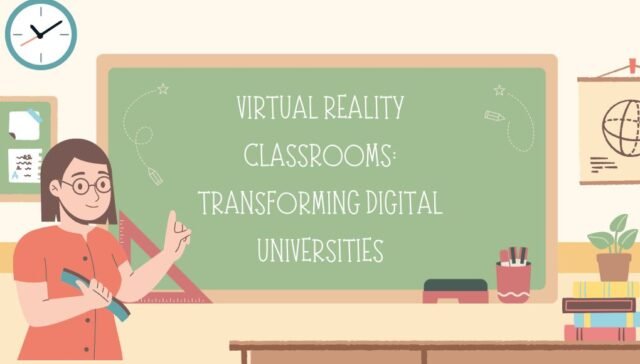Virtual Reality (VR) is revolutionizing education, transforming traditional classrooms into immersive learning environments. As technology advances, VR classrooms and digital universities are becoming integral to the future of education. This article explores the current landscape, future prospects, career opportunities, and educational pathways in this burgeoning field.
Benefits of virtual reality in education,
How VR is changing online learning,
Implementing VR in digital universities,
Future trends in virtual classrooms,
Immersive virtual reality educational tools.
The Evolution of Virtual Reality in Education
VR has transitioned from a novel concept to a practical tool in education. Initially limited by high costs and technological constraints, recent advancements have made VR more accessible to educational institutions. Tools like Google Expeditions have enabled virtual field trips, allowing students to explore diverse environments—from ancient monuments to outer space—without leaving the classroom.
Benefits of VR in the Classroom
-
Immersive Learning: VR provides students with immersive experiences that enhance understanding and retention. For instance, in nursing education, VR allows students to practice solving problems they may encounter in real-world clinical settings.
-
Cultural Exposure: VR enables students to experience different countries and cultures virtually, removing financial and logistical barriers. Schools like Allfarthing Primary in England have utilized VR to build students’ cultural capital, thereby improving their life chances and social mobility.
-
Enhanced Engagement: Interactive VR environments increase student engagement, making learning more enjoyable and effective.
The Rise of Digital Universities
Digital universities are leveraging VR to create virtual campuses, offering students a sense of presence and community regardless of geographical location. These institutions provide flexible learning opportunities, catering to diverse student needs and schedules.
Career Opportunities in VR Education
The integration of VR in education has opened various career paths:
-
VR Content Developer: Design and develop educational VR content, creating immersive learning experiences.
-
Instructional Designer: Incorporate VR tools into curricula, enhancing traditional teaching methods.
-
VR Training Specialist: Implement VR training programs in educational institutions or corporate settings.
-
Educational Technologist: Research and integrate emerging VR technologies to improve educational outcomes.
According to a report by Jobs for the Future (JFF), occupations such as power-line technicians and public safety personnel present high-impact use cases for VR in worker training, indicating a growing demand for VR training specialists.
Top Institutions Offering VR in Education Programs
Several universities worldwide offer courses and programs focused on VR in education:
-
Stanford University (USA): Offers courses in VR design and its applications in education.
-
University College London (UK): Provides programs integrating VR into educational practices.
-
University of Sydney (Australia): Offers courses exploring the use of VR in teaching and learning.
-
Beijing Normal University (China): Focuses on the application of VR in educational technology.
-
University of Toronto (Canada): Provides programs on immersive technologies in education.
Further Reading
For more information on the future of VR in education and related career opportunities, consider the following resources:
Conclusion
The future of education is being reshaped by VR and digital technologies. As these tools become more integrated into learning environments, they offer innovative ways to enhance education and open new career paths for professionals interested in the intersection of technology and learning.














